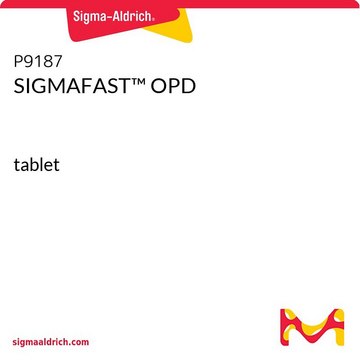S8875
Bicarbonato de sodio
ReagentPlus®, ≥99.5%, powder
Sinónimos:
Sodium hydrogen carbonate
About This Item
Productos recomendados
Agency
suitable for EPA 300
Línea del producto
ReagentPlus®
Análisis
≥99.5%
formulario
powder
pKa (25 °C)
(1) 6.37, (2) 10.25 (carbonic acid)
densidad
2.16 g/mL at 25 °C (lit.)
cadena SMILES
[Na+].OC([O-])=O
InChI
1S/CH2O3.Na/c2-1(3)4;/h(H2,2,3,4);/q;+1/p-1
Clave InChI
UIIMBOGNXHQVGW-UHFFFAOYSA-M
¿Está buscando productos similares? Visita Guía de comparación de productos
Descripción general
Aplicación
- To synthesize nitriles from the corresponding aldehydes and hydroxylamine hydrochloride in the presence of sodium sulfate as a co-catalyst.
- To prepare coumarin derivatives via intramolecular Wittig reaction of substituted 2-formylphenyl 2-bromoacetates.
- In the acetylation of primary alcohols and phenols by reacting with acetic anhydride.
Información legal
Código de clase de almacenamiento
13 - Non Combustible Solids
Clase de riesgo para el agua (WGK)
WGK 1
Punto de inflamabilidad (°F)
Not applicable
Punto de inflamabilidad (°C)
Not applicable
Certificados de análisis (COA)
Busque Certificados de análisis (COA) introduciendo el número de lote del producto. Los números de lote se encuentran en la etiqueta del producto después de las palabras «Lot» o «Batch»
¿Ya tiene este producto?
Encuentre la documentación para los productos que ha comprado recientemente en la Biblioteca de documentos.
Los clientes también vieron
Protocolos
This procedure may be used for the determination of Amyloglucosidase activity using starch as the substrate.
This procedure may be used for all Phosphoglucomutase products except for Phosphoglucomutase, Catalog Number P4109.
This procedure may be used for all Ficin products.
Nuestro equipo de científicos tiene experiencia en todas las áreas de investigación: Ciencias de la vida, Ciencia de los materiales, Síntesis química, Cromatografía, Analítica y muchas otras.
Póngase en contacto con el Servicio técnico




